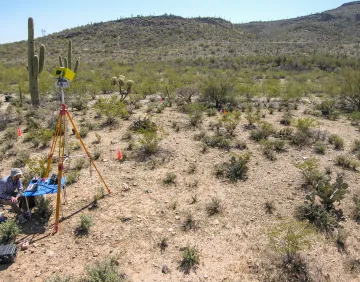
Paul Mirocha
In 1906, Desert Lab scientist Volney Spalding established 19, 10 x 10 m plots on Tumamoc Hill. Twenty-two years later, in 1928, Forrest Shreve set up an additional 8, 10 x 10 m plots on the hill. Within each plot, they identified which plant species were present, in what abundance, and carefully measured the area each plant occupied. Today, about every five to ten years, we continue to take the exact same data in the 17 plots that remain, the others lost to generational turnover and construction of West Anklam Road along the northeastern boundary of the property in the 1970s.
Current research by the Desert Lab’s postdoctoral fellow Dr. Charlotte Brown utilizes this 115-year-old data to understand how desert plant communities are changing over time and in response to climate. She is answering questions such as, what climatic variables are most influential for driving vegetation change? Can we predict species vulnerability or resilience to changes in climate? How is the increased occurrence of extreme temperatures, a trend occurring since the early 2000s, impacting desert plant performance?
An overview of the Desert Lab's long-term vegetation plots, part of the Tumamoc Tour.




